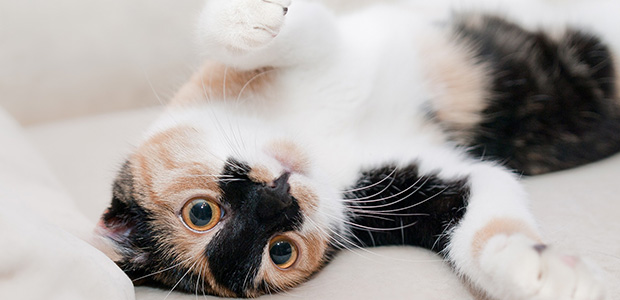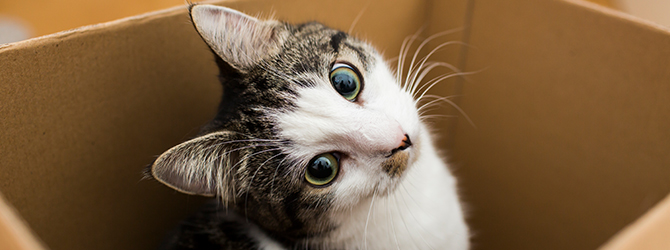Pet Owner's Guide: Moving House with Dogs and Cats
First Published: 06/08/2019
Last Updated: 24/01/2024
Moving house is a period of upheaval and can be very stressful for our furry friends. Keep their anxieties at bay with our top tips for moving with a dog or cat!
Plan ahead
Forward thinking and planning will save you lots of headaches in the future. Make sure, well in advance of your moving date, that your pet is up to date with their vaccines, parasite treatments and that you’re well-stocked with any other medications or products.
Get your pet’s microchip details changed so their chip is registered to your new address. Depending on how far you’re moving, you might need a new vet.
Could a kennel or cattery be the better option?
As part of your planning process, consider a kennel or cattery as an option. If this is the right choice for you, you’ll need to arrange your pet’s stay a few weeks in advance, especially during busy times of the year.
If your pet is particularly nervous and you know a kennel/cattery isn’t for them, see if they can stay with a friend or family member while you’re moving in.
Familiarise your pet with their carrier
You’ll be using your pet’s carrier a fair amount when you’re moving, so it’s a good idea to get them used to its presence. Keep it in the living room, or anywhere your pet spends a lot of time. They will gradually come to get used to it (and won’t just associate it with having to go to the vets!)
Try putting treats in the carrier too – they may even grow to love it – and if your pet is majorly stressed out by their carrier, ask your vet about the various pheromones that are available to help calm them. You could also try Vetpro: Stress & anxiety capsules to calm your pet's nerves.
Cats will be cats
We recommend getting a temporary ID tag for your cat. Even if their microchip details are updated in time for moving day, it’s still a good idea to have a Plan B in place. If you’re moving locally, it may be some time before your cat stops venturing back to your old house and they may get lost along the way.
Before you leave your original home, have a chat with the people moving in. Make them aware of your cat and provide them with your details so they can contact you if needs be.
Factor your pet into your moving day itinerary
On moving day, aim to nominate one room – both in the house you’re leaving and the house you’re moving in to – as the ‘pet room’. This is where your pet will stay during the heavy lifting process. Ideally, the room will be nice and quiet, your pet will be surrounded with toys, bedding, blankets and other familiar things and a member of your family will check on them regularly – or even stay with them the whole time. The more comfortable and familiar your pet feels during the moving process, the better. It’s a good idea to establish the pet room a long time in advance of the move.

When moving out, remove your pet from their pet room at the last possible moment, and move them into the new house first, into their designated area. Make sure to unpack their toys right away and if your pet is having trouble adapting to their new environment, you can use smells to try making them more comfortable – pheromones and anything that smells like your pet can be a great help, and be sure to remove the scent of any previous pets well in advance of moving in!
If you’re moving quite fair afield, be sure to take plenty of toilet stops on your journey.
Maintain your usual routine
Keep your pet’s bed in a similar location, keep feeding time the same and maintain any rules you have i.e. if your pet isn’t allowed upstairs, keep it that way. If you’ve moved locally, try your best to walk your dog around the old route, just while they’re adjusting to their new home.
It’s a good idea not to wash their bedding a week or so before moving out, that way your pet’s blanket will smell of their familiar surroundings and make them feel more comfortable.
The one exception to this rule is: when you move, keep your cat inside for 2 weeks before letting them out. If your cat is an outdoor cat, take extra care to keep their litter tray clean during this time. Read our steps to letting your cat out for the first time.

Meet your new neighbours
What better a way of breaking the ice than introducing your new neighbours to your furry friend? Once your pet has settled in, of course!
Need more info?
For more info on moving with a dog or cat, or managing stress and anxiety in your pet, have a chat with your local vet.
Find your nearest vet using our Find a Vet page, or speak to a vet online using online vets service .


